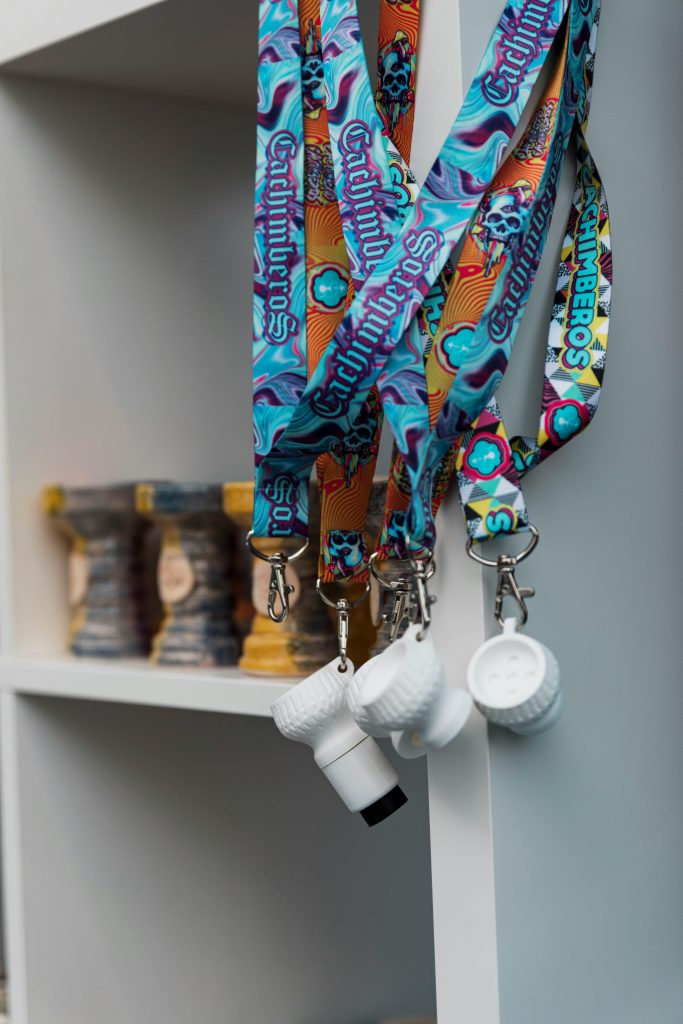Imagine hosting an event where every detail, down to the lanyards, reflects a commitment to sustainability. Picture your attendees appreciating the thoughtful choice of eco-friendly materials, knowing that their participation leaves a lighter footprint on the planet. In 2024, as environmental consciousness continues to grow, selecting sustainable solutions for custom lanyards is not just a trend but a responsibility. But what are the best eco-friendly materials for custom lanyards this year? Let’s explore the top sustainable options that can make your events greener and more impactful.
As the world becomes increasingly aware of environmental issues, the demand for sustainable products has surged. This shift is particularly evident in event planning, where organizers strive to minimize their ecological impact. Custom lanyards, a staple at conferences, concerts, and corporate events, are no exception. By choosing eco-friendly materials for lanyards, event managers can significantly reduce waste and promote a green message. This article will highlight the best eco-friendly materials for custom lanyards in 2024, address common concerns, and provide practical solutions to integrate sustainability into your events.
The Importance of Eco-Friendly Lanyards
Environmental Impact:
Traditional lanyards made from synthetic materials like polyester and nylon contribute to environmental degradation. These materials are derived from petroleum, a non-renewable resource, and their production and disposal generate significant pollution.
- Plastic Waste: Conventional lanyards often end up in landfills, where they take hundreds of years to decompose, contributing to plastic pollution.
Example: A large conference with thousands of attendees using single-use polyester lanyards can generate substantial plastic waste, exacerbating environmental problems.
Sustainable Alternatives:
Switching to eco-friendly lanyards made from sustainable materials helps mitigate these issues. Eco-friendly lanyards are typically biodegradable, recyclable, or made from renewable resources, reducing their environmental footprint.
- Renewable Resources: Materials like bamboo, organic cotton, and recycled PET (rPET) are derived from renewable resources, making them more sustainable options.
Sources:
- Greenpeace on Plastic Pollution
- World Wildlife Fund on Sustainable Materials
Best Eco-Friendly Materials for Custom Lanyards in 2024
1. Bamboo Fiber
Bamboo is one of the most sustainable materials available due to its rapid growth and minimal need for pesticides and fertilizers. Bamboo fiber lanyards are biodegradable, durable, and have a natural, elegant appearance.
- Rapid Growth: Bamboo can grow up to 3 feet in 24 hours, making it a highly renewable resource. It also requires less water compared to traditional crops like cotton.
Example: Bamboo lanyards are perfect for eco-conscious events, providing a stylish and environmentally friendly alternative to synthetic materials.
2. Organic Cotton
Organic cotton is grown without synthetic pesticides or fertilizers, reducing its environmental impact. Lanyards made from organic cotton are soft, durable, and biodegradable, making them a popular choice for sustainable events.
- Chemical-Free: Organic cotton farming practices promote soil health and biodiversity, and they use less water than conventional cotton farming.
Example: For a natural and eco-friendly touch, choose organic cotton lanyards for your next conference or trade show.
3. Recycled PET (rPET)
Recycled PET (rPET) is made from recycled plastic bottles, providing a second life for materials that would otherwise contribute to landfill waste. rPET lanyards are durable, cost-effective, and significantly reduce the environmental impact associated with new plastic production.
- Recycling Process: The process of turning PET bottles into rPET involves collecting, cleaning, and melting the plastic to create new fibers, which can then be used to make lanyards.
Example: rPET lanyards are an excellent choice for events aiming to highlight recycling and sustainability initiatives.
4. Hemp
Hemp is a versatile and sustainable material that requires minimal water and no pesticides. Hemp fibers are strong and durable, making them ideal for producing eco-friendly lanyards.
- Low Environmental Impact: Hemp cultivation improves soil health and sequesters carbon, contributing to its environmental benefits.
Example: Hemp lanyards offer a rustic and natural look, perfect for outdoor events and environmentally focused gatherings.
5. Cork
Cork is harvested from the bark of cork oak trees, which regenerates, making it a renewable and eco-friendly material. Cork lanyards are lightweight, durable, and biodegradable.
- Renewable Resource: Cork oak trees can live for over 200 years, and their bark can be harvested every 9-12 years without harming the tree.
Example: Cork lanyards provide a unique and sustainable option, ideal for events seeking to make a strong environmental statement.
Addressing Common Concerns
Higher Costs
Eco-friendly materials can sometimes be more expensive than traditional options, leading to concerns about increased costs.
Solution: Bulk Purchasing and Long-Term Savings
Purchasing eco-friendly lanyards in bulk can reduce the cost per unit. Additionally, the positive impact on your brand’s reputation and the environment can outweigh the initial investment.
Example: A large corporation hosting multiple events annually can save by ordering sustainable lanyards in bulk, reducing costs and demonstrating corporate social responsibility.
Limited Design Options
Some might believe that eco-friendly lanyards have fewer design options or are less customizable.
Solution: Wide Range of Customization
Many suppliers offer a wide range of customization options for eco-friendly lanyards, including color, printing, and additional features like safety breaks and attachments.
Example: Customizing bamboo or rPET lanyards with your event’s branding and logo can provide the same visual appeal and functionality as traditional lanyards.
Future Innovations in Eco-Friendly Lanyards
Technological Integration:
Looking forward, eco-friendly lanyards may incorporate new technologies such as NFC chips for contactless information exchange or QR codes for digital engagement, enhancing their functionality and sustainability.
Example: An rPET lanyard with an embedded NFC chip allows attendees to tap their badge on a reader to access event information, reducing the need for printed materials.
Sustainable Dyeing Processes:
Future developments might focus on sustainable dyeing processes and non-toxic inks, further reducing the environmental impact of producing custom lanyards.
Example: Organic cotton lanyards dyed with plant-based inks offer a fully sustainable product from material to design, appealing to eco-conscious attendees.
Conclusion
Choosing eco-friendly materials for custom lanyards is a significant step toward sustainability in event management. By selecting options like bamboo fiber, organic cotton, rPET, hemp, and cork, event organizers can reduce environmental impact while promoting a green message. Addressing concerns about cost and customization through bulk purchasing and innovative design options makes it easier to integrate these sustainable solutions. As we move into 2024, the push for eco-friendly materials in custom lanyards will not only reflect environmental responsibility but also enhance brand reputation and attendee satisfaction.
If you are interested in purchasing custom lanyards or if you have any questions feel free to call us at 866-486-3435 or fill out a FREE quote form here.





